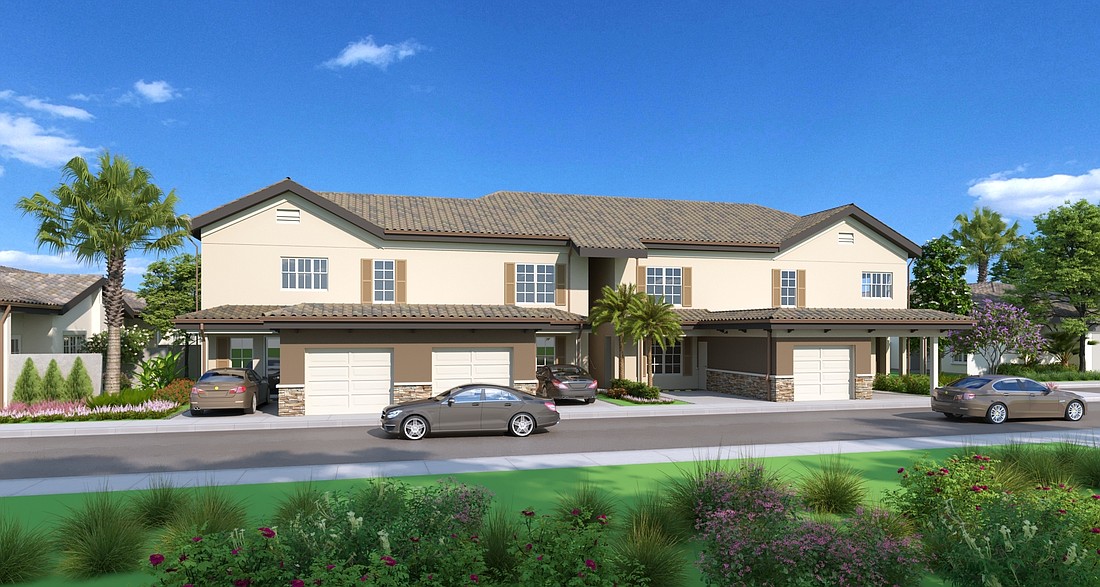- January 14, 2025
-
-
Loading

Loading

There’s a housing development under construction near New Port Richey in Pasco County. It’s just off U.S. 19, on the west side of the Pithlachascotee River.
When complete, this 36-acre development will have 125 homes. There’ll be a pool, a clubhouse, a park for the kids and a park for the dogs. The community itself will be gated.
Nice, right? But is it a big deal? Developments under construction in Florida are a dime a dozen, as common as alligators in lakes or love bugs stuck to your hood in the spring.
What makes this development stand out is not the floor plans offered or the list of amenities or even the builder. What makes this development newsworthy is that is that it’s being built for renters.
The development is called The Keys Homes of Cotee River, and it is part of a growing movement along the Gulf Coast, and nationwide, of housing developments built consisting of nothing but rental homes. Not apartments, but traditional single-family houses, townhouses and bungalows.
“The one thing we know that is never going to go away is the need for affordable housing,” says Jay Mize of Mize & Sefair Development.
Just in this region, The Keys Homes is part of a larger project that, when complete, will include nearly 1,000 units. The other two are The Keys Homes of Wildwood 1 and 2 near The Villages, neither of which have broken ground. In Fort Myers, developers just got financing to build a 129-unit single-family rental project called Soltura at the Forum. And in Venice, developers are planning to build a luxury townhome rental community.
According to a market analysis from Walker & Dunlop, a commercial real estate finance firm that has a build-to-rent practice, growth in the niche segment is expected to outpace multifamily, office, retail, storage and hospitality by 2022. And the firm believes that 5% to 10% of new homes built will be for rent.
The demand is being largely driven by families with children who want to move into the suburbs. These are renters looking for extra space and the amenities that come with suburban living but who are finding there are not enough rental homes available.
A study by the Urban Land Institute backs that up. The organization found that 13.5 million families make up 30% of all renters in the U.S. Despite that, the average size of an apartment in 2019 was 923 square feet — 100 square feet smaller than in 2017.
While 47% of families that rent live in single-family or attached homes, the study's authors wrote that that inventory of “purpose built” single family rental homes remains small and that “there are clear opportunities to better serve family renters, who represent a key and growing segment of the overall housing market.”
Along with families, the growth of the build-to-rent segment is also aimed at millennials who don’t see home ownership as a paramount goal and older people downsizing but wanting more than an apartment.
But money remains a key factor for renters, analysts and developers all say. “The one thing we know that is never going to go away is the need for affordable housing,” says Jay Mize of Mize & Sefair Development, the developers of The Keys Homes. “Whether the build-to-rent space specifically is around forever or not, we know affordable housing well and that’s really what we’re building.”
Mize & Sefair are partnering with the Belleair Development Group on the project.
Mize & Sefair says a development like theirs offers people the benefits of living in a single-family home on a quiet suburban street with good schools nearby at more affordable prices and without the sometimes-heavy costs associated with home ownership. The Keys development, for example, will include three-bedroom, two-bath homes with patios and with rents ranging from $1,350 to $1,495 a month. There will be a management team on site and maintenance crews.
According to data from Rocket Mortgage, the median monthly house payment in the U.S. is $1,100 and $1,466 in Florida. And that’s before taxes, insurance and fees are rolled in. And the owner is responsible for all costs that are incurred over the life of their ownership as well as paying homeowner association fees.
Therein lies the growing interest in good and affordable single-family homes, Mize & Sefair executives say. “Essentially, what we’re building are single story apartment complexes if you really want to know,” Dan Sefair says.
For developers, build-to-rent communities have a strong pull: these projects provide a steady stream of cash flow and commits them long-term to a community. And that commitment is reciprocated. According to the Walker & Dunlop analysis, pre-pandemic occupancy at build-to-rent homes were at a 20-year high at 94.4% and rents year-over-year were up 4%. Occupancy, in the first quarter of this year, had jumped to 98.3%.
Isaac Marcushamer, general counsel and managing director of Kaplan Residential, says his company is very careful about how it approaches building a new development because it’s making a long-term commitment.
Kaplan is building a 239-unit luxury townhouse complex in Venice, the Venice Club, and it has a long history in the built-to-rent sector. The company built its first townhouse community in 1998 in Atlanta and currently has a pipeline of nearly $300 million in development.
These projects follow a shift in what customers are looking for, like having service requests answered quickly, access to amenities and to management on site if there is a problem, Marcushamer says. “So the advantage is that…you have all trappings of an apartment building,” he says, adding many people “don’t want the burdens of homeownership but want the benefits of having their own space.”